New 2,000-year-old documents have been unearthed at the Roman fortress of Vindolanda in northern England. One of the most exceptional archaeological sites in Europe.
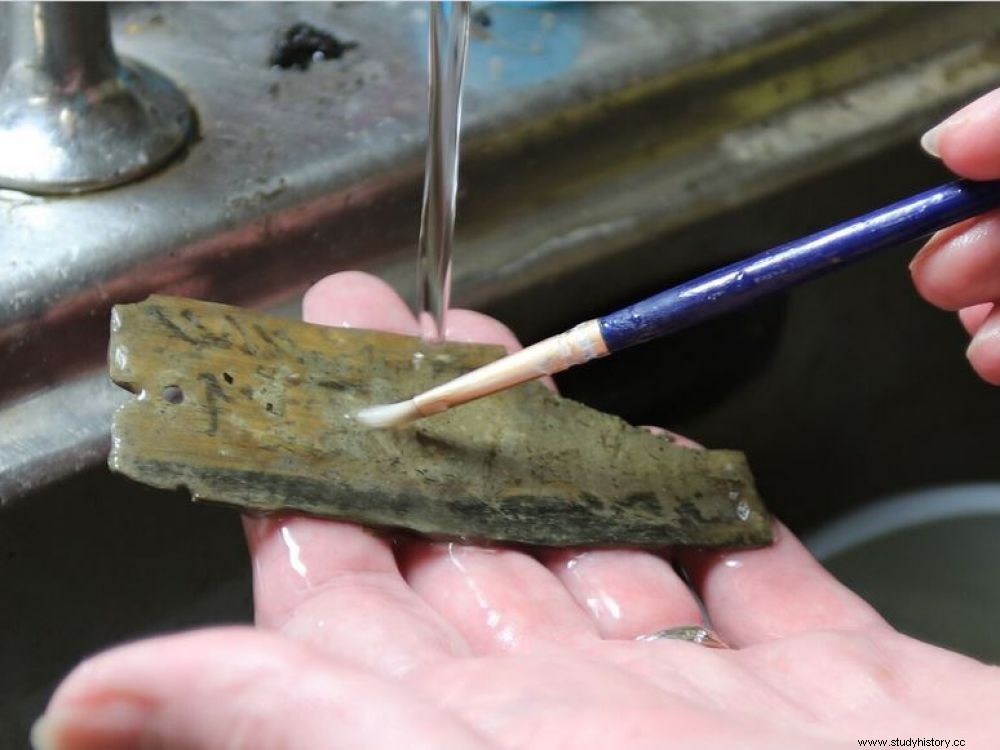
Cleaning of a fragment of a wooden tablet revealing 2000 year old Roman writings.
The Roman fortress of Vindolanda (1 st -5 e century) never ceases to amaze. It is one of many defensive structures located along the 117 kilometers of the wall built around 120 CE at the request of Emperor Hadrian (Vallum Aelium) intended to protect the Roman Empire from the fierce northern tribes. For 25 years now that he has directed the excavations, Andrew Birley, CEO of the Vindolanda Trust and director of the "Vindolanda Excavations", still cannot believe the quantity of objects delivered by this unit created in 83, and occupied by the legions until 410 of our era.
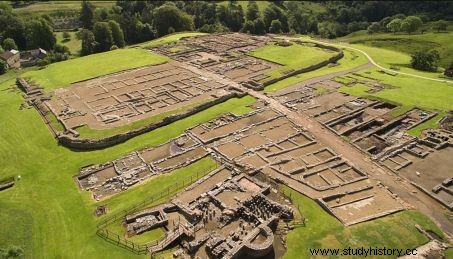
Remains of the Roman fort of Vindolanda in the north of England. © The Vindolanda Trust
This 2017 season, another 25 fragments of ancient wooden tablets – mostly oak but also birch and alder – were unearthed at the bottom of a pit. They are covered with texts written in ink (mixture of carbon and gum arabic) between 105 and 120 AD. They complete the collection of 14 others already found scattered around the excavation site. "Some pads have survived so well that they can almost be read directly “, explains Andrew Birley joined by Sciences et Avenir . They are mostly soldiers' correspondence and administrative documents related to the management of this important Roman fortification in the north of England, near Bardon Mill, in Northenberg, on the southern border of Scotland. A set built "by Belgian auxiliaries of the First Cohort of Tungrians and the Third and Ninth Cohorts of Batavians". Some of the names cited in the texts had already been identified on previous fragments. This is the case of an officer named Masclus . “One of the recent documents found is his vacation request (commeatus) adds Andrew Birley. In the past, a missive from this same Masclus had been exhumed:the officer asked Commander Flavius Cerialis bring back more beer for his troops at the Wall Outposts!
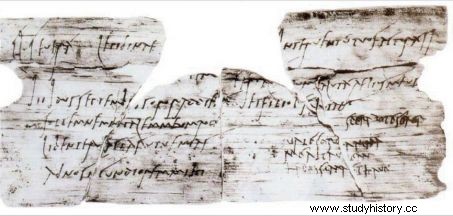
This fragment found in Vindolanda, invited the wife of the commander of the fortress to a birthday party! © The Vindolanda Trust.
Extracted from the mud, the precious organic remains will now be subjected to a battery of treatments to be permanently protected from degradation. They will then be examined using infrared light to precisely identify their contents. Several months will be necessary for their decryption. Considered a national treasure, they will then join the 2,000 other fragments kept at the British Museum in London since the first discoveries made in 1973 by Robin Birley, the father of the current director of the site. All of them are indeed precious testimonies of garrison life, constituting the most important archives of Roman texts in northwestern Europe:demand for underwear and woolen socks to fight against the cold; muster rolls showing that a large number of soldiers were "calling in sick" due to illness... "This concerned legionnaires of multiple nationalities, and affected all social classes, from officers to slaves says Andrew Berley.
The Vindolanda fort also delivered a large number of objects, including thousands of soldiers' shoes stored on linear shelves! The largest collection ever encountered. Some are in such a state of preservation that they could almost be worn. “In 2016 alone, we collected 417! smiles Andrew Berley.
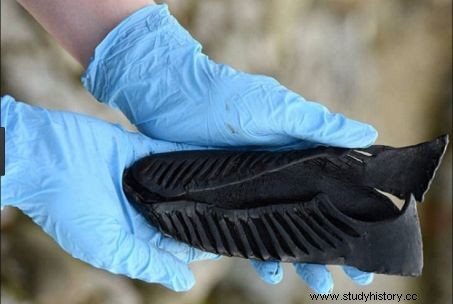
© The Vindolanda Trust
The Romans in England
Before the emperors Hadrian in 120, then Antoninus Pius, 20 years later, managed to erect two monumental walls in the north of England… Rome had already had to conquer the big island! Which was not done without difficulty
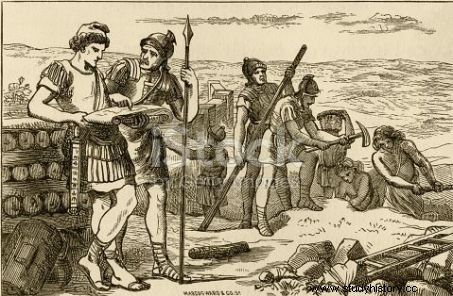
Roman soldiers building Hadrian's Wall circa 120 CE (England).
After two unsuccessful attempts by Caesar (55 and 54 BCE), Emperor Claudius had finally succeeded in invading Britannia (island Brittany) in 43 CE. Under the fallacious pretext of coming to the aid of an allied kinglet, the emperor had managed to land on the island four of the most powerful legions of Rome (IIe Augusta, IX Hispana, VIe Victrix, XIVe Gemina and the 20th Valeria Victrix ) as well as their auxiliary troops consisting of non-Roman mercenaries. That is 40,000 men deposited at Dover by the fleet. But from the 1960s, under the reign of Nero, the Romans had to face violent revolts, in particular that led by Boudicca (Boadicea), queen of the Icenians (people of present-day Norfolk) during which dozens thousands of Roman soldiers were massacred. The uprising was eventually "put down" by General Suetonius Polinius who restores imperial order by annihilating the 80,000 Bretons of the army raised by this queen who has become legendary.
Fifteen years later, it seemed useful to the Romans to conquer the entire island, and therefore to add Scotland (Caledonia ). This is General Gnaeus Julius Agricola who undertook to bring to heel the recalcitrant tribes of the highlands of Scotland. It is under his command and those of the governors who succeeded him during the reign of the Flavians (Vespasian, Titus, and Domitian (70-96 AD) when the first lines of defense were erected with fortifications. The aim was to contain and monitor the Calédonii , a group of hostile tribes living in the north and considered the ancestors of the Picts [this name will not appear until the 3rd century], the famous "painted men". Rather than build an artificial defense – which they would later do with Hadrian’s Wall – the Romans then chose to establish a network of forts based on the natural barrier formed by the Highlands. Thus connected by roads, impressive fortresses similar to Inchuthil or Vindolanda were erected, as well as forts and watchtowers such as Camelon, Ardoch, Cargill, Straghea, Stacathro or Raedykes.
